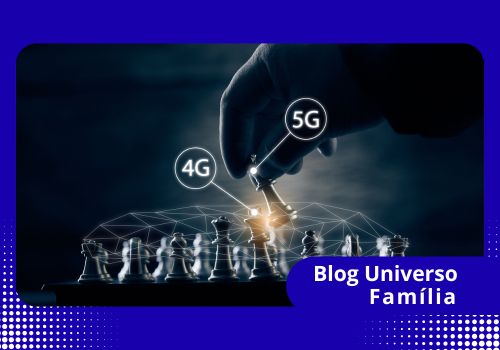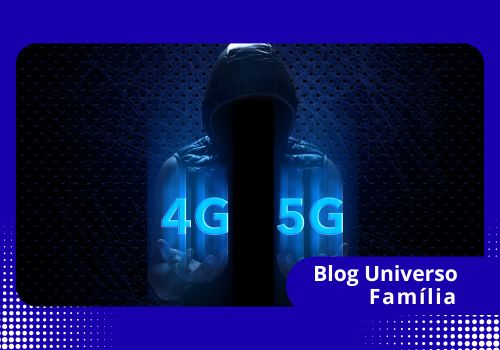Ads
Differences between 4G, 5G and Wi-Fi 6 explained easily It is one of the most searched questions in 2025 by users who want to understand how their Internet connection is evolving.

And although at first glance they all promise speed, each one changes the way you work, study, and communicate.
In this guide you will discover:
- What really distinguishes 4G, 5G and Wi-Fi 6.
- How they influence your daily life and the digital economy.
- What technologies suit your needs.
- A summary with real data and an updated comparison table.
Get ready to easily understand how these networks are shaping the present and future of connectivity.
4G: The Foundation of Modern Mobile Internet
4G marked the beginning of the era of high-speed mobile Internet.
Ads
Since its deployment in 2010, it has allowed users to browse, stream videos, and use social media without relying on Wi-Fi.
Thanks to 4G, apps like Uber, Spotify, and WhatsApp have revolutionized mobility, entertainment, and instant communication.
Its average speed is around 100 Mbps, sufficient for most everyday tasks.
Ads
However, by 2025 this technology will begin to show its limits: increased congestion in urban areas, high latency (30 to 50 ms), and high energy consumption.
Therefore, 5G and Wi-Fi 6 emerge as a response to these growing demands.
5G: The network that redefines the digital experience
Talking about 5G isn't just about speed, it's about an infrastructure that connects devices and people with unprecedented efficiency.
Differences between 4G, 5G and Wi-Fi 6 explained easily shows that the leap from 4G to 5G is not incremental, but transformative.
While 4G took seconds to respond, 5G does so in milliseconds, with a latency less than 1 ms.
This enables real-time experiences: remote surgeries, autonomous driving, 8K streaming, and lag-free gaming.
According to data from GSMA Intelligence, more than 60 % mobile connections in Latin America already operate under 5G networks or are in the process of migrating.
In Mexico, Telcel, AT&T, and Movistar are accelerating their expansion into rural areas, bringing advanced connectivity to more homes.
An everyday example: a family video call with 5G maintains 4K quality without interruptions, even with multiple devices connected.
Another example: a farmer uses 5G sensors to monitor soil moisture and temperature in real time, optimizing irrigation.
5G is like going from a two-lane highway to a ten-lane highway: traffic flows smoothly, even during rush hour.
Wi-Fi 6: Speed and efficiency at home and in the office
While 5G dominates outer space, Wi-Fi 6 leads the domestic and work areas.
This technology, also known as 802.11ax, improves speed and connection capacity within private networks.
The main advantage of Wi-Fi 6 is its ability to maintain high performance even with multiple devices connected.
By 2025, the average household will have more than 30 online devices: TVs, voice assistants, game consoles, cameras, and smart appliances.
With previous networks, traffic easily became saturated; now, each device receives the bandwidth it needs.
In addition, Wi-Fi 6 introduces energy-saving features and improved security thanks to the standard. WPA3, which reduces vulnerabilities to cyberattacks.
If 5G is the public highway, Wi-Fi 6 is a highly efficient private network: they complement each other, not compete.
Main differences between 4G, 5G and Wi-Fi 6
Understanding the Differences between 4G, 5G and Wi-Fi 6 explained easily requires looking beyond the numbers.
Each technology responds to different contexts: mobility, coverage or private environment.
| Feature | 4G (2010–2025) | 5G (2020–present) | Wi-Fi 6 (2020–present) |
|---|---|---|---|
| Maximum speed | 100 Mbps | 10 Gbps | 9.6 Gbps |
| Average latency | 30–50 ms | <1 ms | 5–10 ms |
| Simultaneous devices | Up to 10,000/km² | 1,000,000/km² | 200 per router |
| Type of coverage | Global and mobile | Global and mobile | Local (home, office) |
| Energy efficiency | Average | High | High |
| Security | WPA2 / SIM standard | Advanced Authentication | WPA3 |
| Featured Apps | Streaming, networks | IoT, AI, virtual reality | Smart homes, gaming |
The table demonstrates that 5G and Wi-Fi 6 are complementary: one provides mass mobility, the other local stability.
Both represent the next logical step after 4G.

Read more: Digital Safety: Protect Your Family from Online Scams
Impact on daily life and remote work
The three technologies coexist in everyday life, enhancing different areas.
With 5G, you can work from anywhere without interruption, while Wi-Fi 6 optimizes video calls and cloud collaboration.
In education, students participate in interactive virtual classes with minimal latency.
In entertainment, users enjoy video games or concerts in seamless, immersive streaming.
And in homes, smart appliances communicate with each other efficiently.
Connectivity is no longer a luxury but a structural necessity, like electricity or drinking water.
Economic and social effects of the 5G and Wi-Fi 6 advance
The arrival of 5G and Wi-Fi 6 is driving a new phase of economic growth.
According to the consulting firm Deloitte (2024), the 5G ecosystem will generate more than 22 million jobs worldwide over the next decade, boosting industries such as transportation, healthcare, education, and manufacturing.
In Mexico, digitalization is accelerating: SMEs are adopting cloud-based systems, and e-commerce is growing at double-digit rates thanks to the stability of modern networks.
Smart cities use connected sensors to manage traffic, lighting, and energy consumption.
Each connection point becomes a source of data that enables more agile and sustainable decisions.
Privacy, security and sustainability
While the benefits are enormous, so are the challenges.
The growing number of connected devices increases the risk of cyberattacks.
That's why 5G and Wi-Fi 6 networks incorporate stronger encryption and enhanced authentication.
Another key aspect is energy consumption.
Unlike 4G, 5G can transmit more data with less power thanks to its optimized architecture.
In fact, the International Telecommunication Union (ITU) estimates that this technology reduces up to 90 % the consumption per transmitted bit.
Digital sustainability thus becomes a strategic axis: connecting more without depleting resources.
How to choose the best technology for your case
Not all needs require the same network.
If you travel frequently and need nationwide coverage, 5G is ideal.
If you work from home or run a business, Wi-Fi 6 offers stability and lower cost.
The smart thing to do is combine them: use Wi-Fi 6 indoors to reduce power consumption and take advantage of 5G when you go outside.
Together, they ensure productivity, seamless entertainment, and data security.
The key is to understand how each technology fits into your environment, not to choose one over another.
Conclusion: The future of connectivity has already begun
In short, Differences between 4G, 5G and Wi-Fi 6 explained easily It shows that we are living at a technological turning point.
4G laid the groundwork, 5G takes connectivity to the next level, and Wi-Fi 6 optimizes the local experience.
Together, these networks create a faster, more efficient, and more secure ecosystem.
It's not just about browsing faster, it's about transforming the way you work, learn, and interact with the digital world.
The future isn't coming: it's already here, and it connects through your device.
Read more: 5G Internet: What Changes It Makes in Your Daily Life
Frequently Asked Questions (FAQ)
1. Will 5G replace Wi-Fi 6?
No. They are complementary technologies.
5G offers broad mobile coverage, while Wi-Fi 6 specializes in closed and controlled spaces.
2. What do I need to use Wi-Fi 6?
A compatible router and modern devices (smartphones, laptops, or TVs with 802.11ax support).
3. Will 4G disappear soon?
Not in the short term. It will continue to operate in areas where 5G has not yet been deployed, especially rural areas.
4. Does 5G consume more battery?
The first models, yes, but the 2025 chips are 30 % more efficient thanks to 3nm manufacturing processes.
5. Is it worth upgrading now?
Yes, if you want to make the most of streaming, remote work, and IoT devices.
Investment improves productivity and stability.